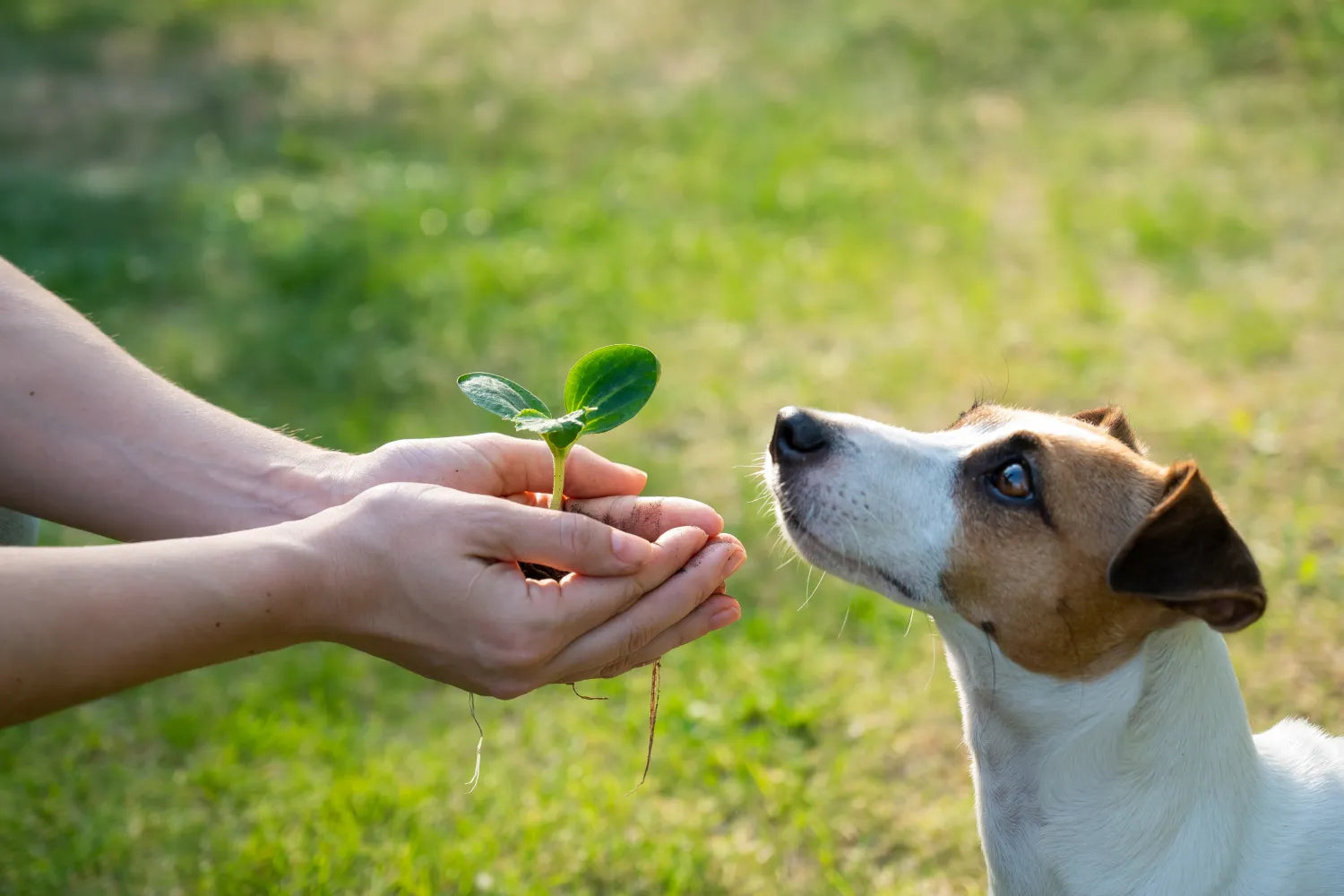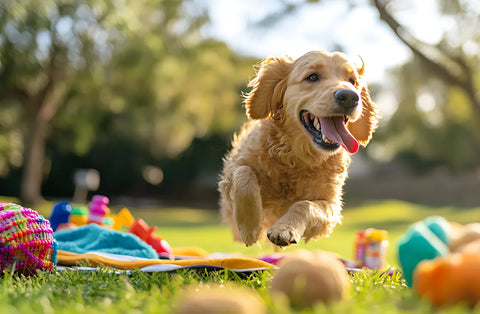
When Do Dogs Stop Growing?
Watching your puppy zoom around the yard, you might wonder how long it’ll be before they trade that boundless puppy energy for a more dignified doggy trot. Just when do dogs stop growing?
Every pup grows at their own unique pace, influenced by a medley of factors like breed — from tiny Chihuahuas to towering Great Danes, the timeline to full-grown can vary wildly. Here at A Pup Above, we understand your eagerness to know what to expect as your pup grows up.
That’s why we’re diving into the world of dog growth, unpacking everything from breed-specific timelines to the signs that indicate they’ve reached their full stature. So, if you’re ready to learn just how big your puppy might get — keep reading!
When Do Dogs Stop Growing?
So, when exactly do dogs stop growing? While all puppies share that adorable gangliness, the age at which they stop growing sprouts and stretches varies widely.
Several factors come into play that can influence the growth rate and final size of your pup.
Breed Size
The breed is one of the biggest determiners. Smaller breeds generally wrap up their growing much quicker than larger breeds. Your pocket-sized Yorkie will mature faster than a sprawling Saint Bernard.
Genetics
Just like people, a dog's genes have a lot to say about growth. Genetics influence not only the potential adult size but also how quickly they'll reach that size. If you’ve met your dog’s parents, that’s a good indicator of what to expect.
Nutrition
You are what you eat, and the same goes for pups! Adequate nutrition is crucial for healthy development. A well-balanced diet tailored to their specific breed and growth needs can make all the difference in how they grow.
When Are Dogs Fully Grown?
Being fully grown doesn't just mean your dog stops getting taller. It's about when their bones are fully developed, and they've hit their full size — think of it as your dog finally growing into those oversized paws!
Smaller breeds might get there as soon as they blow out the candle on their first birthday cake, while the bigger breeds might not hit that mark until they're trotting toward their third.
This milestone is also when your dog's bones have solidified, which vets can see from the closure of growth plates during an X-ray. So, while your pup's lanky days might be winding down, they're stepping into their full frame — ready to move from bouncy puppy leaps to full-grown dog strides.
Normal Puppy Growth Chart and Stages
While we've discussed how individual growth can vary, here's a handy chart to give you a snapshot of the typical stages a puppy goes through as they grow up. It's a simple guide to help you track the milestones they might hit along the way.
|
Age |
Stage |
Developmental Milestones |
|
Birth - 2 weeks |
Neonatal |
Mostly sleeping, dependent on mom for everything. |
|
2 weeks - 1 month |
Transitional |
Eyes and ears open, starting to wobble around a bit. |
|
1 month - 3 months |
Socialization |
Learning to play, starting to interact more, teeth coming in. |
|
3 months - 6 months |
Juvenile |
Growing quickly, getting into everything, basic training kicks in. |
|
6 months - 1 year |
Adolescent |
Growth rate slows, hitting puberty, testing boundaries. |
|
1 year and beyond |
Adult |
Fully grown, bones matured, settling into adult life. |
Remember, this chart is a general guideline. Some pups might breeze through these stages faster or hang in one phase a bit longer, especially when it comes to different breeds. Keeping up with regular vet visits is a great way to ensure your pup is on the right track and growing up healthy.
Can You Tell How Big a Puppy Will Get?
Wondering how big your sweet pup will get? It’s one of the first things most pet parents think about — especially when those paws look a little too big for their body! While there’s no magic formula to predict their exact size, there are a few clues that can help you get a decent estimate.
First, consider their breed. If you have a purebred pup, the average size for that breed will give you a solid idea.
If your dog is a mix, things get a little trickier, but knowing the breeds in their mix can still be helpful. You can also look at their parents — if you have access to that info. Puppies tend to fall somewhere between the size of mom and dad. And let’s not forget those paws — while not an exact science, bigger paws often suggest a larger dog to come.
Now, for the data lovers, there are DNA tests that can help predict your pup's adult size by looking into their breed makeup and genetics. These can be fun to do and give you a better idea of what to expect as your pup grows.
Do Dogs Usually Grow After One Year?
While many dogs reach most of their adult size within the first year, some still have a bit more growing to do after they turn one. This is especially true for larger breeds.
Small dogs — like your Pomeranian or French Bulldog — are typically done growing around their first birthday. Larger breeds like Labradors, Goldens, and especially giant breeds like English Mastiffs can continue to fill out and gain muscle for several more months, sometimes up to two years.
How Can I Help My Puppy Grow Strong and Healthy?
Watching your puppy grow is exciting, and you want to make sure they’re getting everything they need to develop well. There are a few simple ways to help your pup along the way, from what they eat to how they play.
Here are some easy tips to support healthy growth for your pup.
Feed Them Right
What your puppy eats makes a huge difference in their growth. A balanced diet is key to building strong bones and muscles. That’s why it’s important to give them food that’s packed with high-quality ingredients.
At A Pup Above, our fresh, human-grade sous-vide meals are perfect for growing pups. Each recipe is crafted to deliver essential nutrients without any junk fillers. Whether it's the savory Texas Beef Stew or the flavorful Turkey Pawella, your puppy is getting real food that helps them grow strong and healthy. Plus, the taste is something they'll drool over!
Keep Them Moving
Puppies need regular exercise to help them grow and burn off all that energy. Short walks, playtime, and some running around the yard are great ways to keep them active. Just make sure the activities are suitable for their age and breed — too much too soon can be tough on their growing joints.
Stay on Top of Vet Visits
Regular vet checkups are important to track your puppy’s growth and catch any issues early. Your vet will make sure your pup is growing as expected and give you advice on keeping them healthy along the way.
Make Time for Rest
Puppies need a lot of sleep, and we mean a lot. Growing is hard work! Make sure they have a cozy, quiet spot to nap throughout the day. This rest helps with their physical development, so don’t worry if they spend a good chunk of their day snoozing.
Socialize and Train Early
Mental development is just as important as physical growth. Socializing your puppy — introducing them to new people, other dogs, and different environments — helps them develop confidence and good behavior. Training them early on also helps shape their behavior, making them a well-rounded dog as they grow.
Groom Them Regularly
Grooming isn’t just about keeping your puppy looking good. Regular brushing and bathing keep their coat and skin healthy, and it’s also a chance to check their overall health. While grooming, you can keep an eye out for anything unusual, like lumps or skin issues, and handle it early.
The Bottom Line
So, when do dogs stop growing? While it depends on the breed and other factors, most dogs hit their full size between one and two years. Every pup’s journey is a little different, but with the right care, they’ll grow up happy and healthy.
At A Pup Above, we believe giving your dog the best nutrition is key to supporting their growth. Our fresh, human-grade meals are packed with the nutrients they need to thrive. Ready to help your pup grow into their best self? Check out our delicious, healthy options today!
Sources:
When Does My Puppy Finish Growing? How Long Do Puppies Grow? | AKC
A Puppy Growth Timeline: Transitions in Puppyhood | American Kennel Club
Socializing your dog | Animal Humane Society
Researchers Identify Gene Involved in Dog Size | National Institutes of Health (NIH)
Top Stories

Why Do Dogs Lick Their Paws?

Why Do Dogs Whimper & Make Noises in Their Sleep?

Healthy Vet-Approved Homemade Dog Food Recipes

How To Cook Sweet Potatoes for Dogs






















